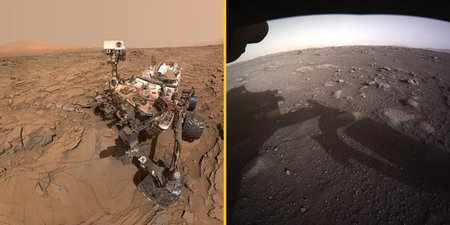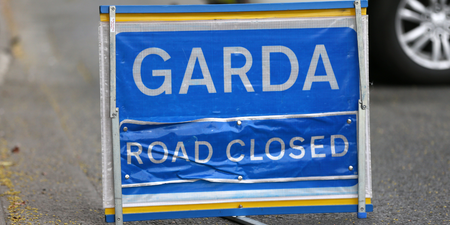The comet will pass closest to Earth tonight.
An incredibly rare green comet will be visible from Earth tonight for the first time in 50,000 years. Comet C/2022 E3 will fly past our planet at a distance of about 26.4 million miles (42.5 million km).
Stargazers will be able to tell the difference between the comet and surrounding stars as it will have a streaking trail of dust following it.
The last time the comet flew past, the Neanderthals were still roaming Earth. Comets are balls of ice, dust and rocks that typically come from the ring of icy material on our solar system’s outer edge.
As they get closer to the Sun, they begin to melt, releasing a stream of gas and dust behind them.
WHAT A BEAUTY!
Comet C/2022 E3 ZTF, imaged from my garden in Devon, UK. @VirtualAstro pic.twitter.com/3JoG6nTUrF— Tim White (@ColytonWildlife) January 23, 2023
The one that most people have probably heard of is Halley’s Comet, which is visible from Earth every 75-79 years.
But C/2022 E3 last passed our planet tens of thousands of years ago, at a time when Neanderthals still inhabited Eurasia, big Ice Age mammals including mammoths and sabre-toothed cats roamed the landscape and northern Africa was a wet, fertile and rainy place.
To help you visualize and understand the journey of Comet C2022 E3 (ZTF) or "The Green Comet"☄️ as it makes a close approach to Earth this week: February 1st.
The last time this comet approached the inner solar system was 50 000 years ago.
With a little help from Blue Rodeo. pic.twitter.com/dz24S6j7QF
— Mike Gerald Gibbs🏳️🌈 (He/Him) (@Mikeggibbs) January 29, 2023
Because it was formed during the early stages of the solar system, scientists hope the comet will be able to provide clues about the solar system’s formation.
The comet was discovered in March by astronomers using the Zwicky Transient Facility telescope at Caltech’s Palomar Observatory in San Diego.
Astronomers believe it suffered a “disconnection” event caused by turbulent space weather in order for it to appear in our skies.

Its green appearance reflects the comet’s chemical composition and is the result of a clash between sunlight and the diatomic carbon in the comet’s thin gassy atmosphere, known as a coma.
Diatomic carbon is an unstable, gaseous form of carbon in which the element’s atoms are bonded together in pairs. Scientists say it is formed on the head of the comet when larger carbon-based substances are broken down by sunlight as the comet approaches the sun.
When diatomic carbon is excited by ultraviolet rays, it gives off light, resulting in the green coma that has been seen surrounding the space rock.
It is hoped that the celestial object will be visible for many stargazers on Earth tonight, with reports suggesting it has already been spotted by some observers without equipment once the moon had set.
The comet will make its closest approach to Earth on Wednesday and Thursday, passing a mere (26 million miles from the planet).
The green comet C/2022 E3 (ZTF) is zooming back past us after almost 50,000 years. On February 1st, the comet will come within 26 million miles of Earth before speeding away again, not returning for millions of years. pic.twitter.com/OruyZz0vaK
— BBC Earth (@BBCEarth) January 31, 2023
Those with binoculars and a telescope though will definitely have the best chance of getting a glimpse at it though.
To increase your chances, your best bet is to head out on Wednesday night to somewhere really dark – away from the bright lights of a city at night – after midnight and look for a smear in the sky, the Guardian reports.
The comet with the snappy name: Comet ZTF C/2022 E3! Around 2 hrs condensed to 7 secs, taken late last night, 1/30/2023, amid plenty of neighborhood light pollution.#CometZTF #comet #eastbay pic.twitter.com/ZuQMlYEVwu
— lyndie (@lyndie_chiou) January 31, 2023
“The comet is in the north of our skies, currently close to Polaris, the pole star directly due north,” said Jake Foster, a Royal Observatory astronomer. “The comet is best viewed after midnight, when it reaches its highest point in the sky. It will move a significant distance across the sky from night to night as it makes its way towards the constellation of Taurus over the coming weeks.”
You can also use various free stargazing apps to pinpoint the comet’s exact location and make your life easier.
Related links:
- NASA release breathtaking pictures of Earth after historic Artemis launch
- Hundreds of people report sightings of ‘multicoloured fireball’ over Scotland and Northern Ireland
- Huge ‘planet killer’ asteroid has been found hidden in the sun’s glare
LISTEN: You Must Be Jokin’ with Aideen McQueen – Faith healers, Coolock craic and Gigging as Gaeilge



















































